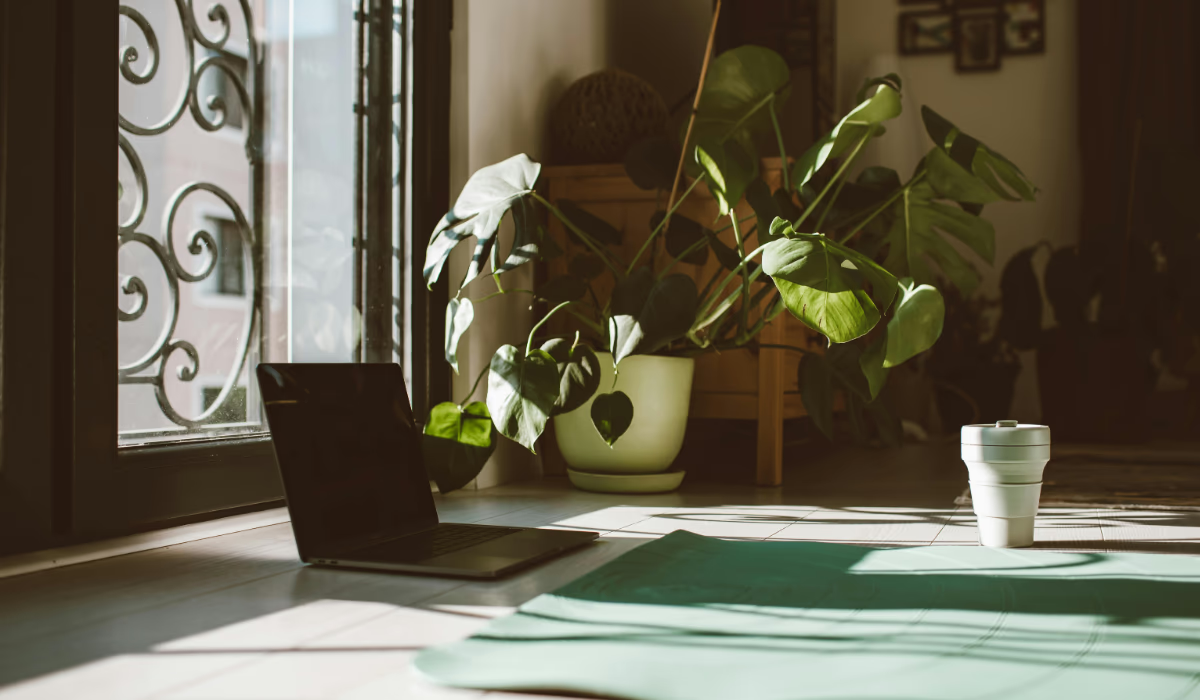Your living room is one of the most important areas of your home for feng shui. It’s where you entertain, relax, and often spend the most awake time. Applying feng shui principles here can improve comfort, energy flow, and the overall vibe of the space.
From arranging furniture to choosing colors, lighting, and décor—small changes can make a big difference in how your living room feels and functions. This guide will cover layout, energy flow, element balance, and common pitfalls to avoid.
Furniture Placement & Command Position
Furniture placement is foundational in feng shui for the living room. The arrangement determines how energy (qi) moves and whether it feels inviting or blocked. One key principle is the “commanding position,” which says that major furniture—especially the sofa—should be placed so that you can see the room’s entrance without being directly aligned with it. This provides a sense of security and awareness.
Also, avoid placing large furniture flush against all walls. Leaving space around pieces helps energy flow freely and makes the room appear more spacious. If possible, floating furniture slightly from walls and ensuring there are clear pathways improves both movement and qi circulation.
Declutter, Clean & Clear Energy
A cluttered living room can block energy and lead to feelings of stagnation or stress. Clearing surfaces, removing items you no longer use, and ensuring the space is tidy are vital steps in feng shui. Natural light helps with this—opening windows, keeping them clean, and allowing sunlight fosters freshness.
Space-clearing rituals can also help reset energy. Smudging, diffusing essential oils, ringing bells, or simply doing a clean-up followed by a short intention setting (what you want your space to feel like) are suggested in several feng shui guides. These practices are especially useful if you’ve had negative energy lingering or if your living room hasn’t felt “right.”
Incorporating the Five Elements & Color
Using the five elements—wood, fire, earth, metal, and water—balances visual energy and supports different moods and functions. For example, wooden furniture or plants represent the wood element (growth), while metal objects bring clarity. Incorporating water (via decorative bowls, artwork with water themes, or cool colors) and fire (via lighting, candlelight or warm accents) builds richness and harmony.
Color choices amplify this balance. Use colors that align with the elements you’re emphasizing—earth tones for grounding, soft blues/greens for calm, warm tones like reds/oranges sparingly to energize. Also consider how light affects color, and test swatches across the day.
Lighting, Mirrors & Natural Elements
Lighting should be layered: overhead, ambient, task lighting (e.g. table lamps or sconces) to avoid harsh shadows and create warmth. Natural light is extremely beneficial—open curtains or blinds whenever possible, and use sheer fabrics to diffuse sunlight. Mirrors are useful—but be mindful where you place them. Avoid mirrors that reflect the front door directly, but placing them to reflect natural views or beautiful décor expands perceived space and energy.
Adding indoor plants brings life and vitality (wood element), improves air quality, and soothes the space visually. Choose healthy, vibrant plants. Also consider natural textures/materials—wood, stone, fabrics—these contribute to comfort and balance.
Room Flow & Balance of Yin & Yang
Feng shui living room layout isn’t just about placement—it’s about balance. Yang energy is active, social, outgoing; yin is calm, restful, introspective. Your living room should provide both: a place to gather and be lively, and corners or nooks for relaxation and quiet.
Ensure that seating promotes conversation. Arrange chairs and sofas so that people can see each other and feel engaged. Avoid seating with backs directly to entrances; if unavoidable, place a mirror or a decorative screen to soften that. Maintaining an unobstructed pathway through the room is also essential so energy can move easily.
Common Mistakes & What to Avoid
Overcrowding the room with furniture or décor is a frequent issue. Too many items or bulky furniture can block flow and make the room feel heavy. Similarly, overly dark colors or heavy textures in poorly lit rooms tend to dampen energy rather than enhance it.
Another mistake is neglecting entrance visibility, or positioning furniture in a way that someone sits or lies with their back directly toward the door. Poor lighting, mismatched color undertones, or ignoring the five elements are also common missteps that reduce harmony.
Conclusion
Optimizing your living room using feng shui layout and tips makes the space not only visually inviting but energetically balanced. With thoughtful furniture placement, decluttering, balanced elements and color, layered lighting, and a mindful flow between yin and yang, your living room can become a sanctuary of calm and connection. Small adjustments often lead to big improvements in how your home feels.
FAQs
What is the commanding position in a living room?
It’s where your main seating (like the sofa) lets you see the entrance without being directly in line with it—this helps with a sense of security and awareness in the room.
How can I bring balance of yin and yang in a living room?
Include both relaxing, calm zones (yin) and social, energetic areas (yang). For example, a cozy reading nook vs. a conversation area. Use lighting, textures, and furniture to differentiate.
Are mirrors always good for feng shui in the living room?
Mirrors help reflect light and expand space visually. But avoid placing them directly facing the front door, which can push energy out.
What colors work best in living room feng shui?
Choose colors that correspond to the elements you want—earth tones for warmth, soft blues/greens for calm, warm accents (red/orange) for vitality. Light colors help in smaller or dim rooms.







